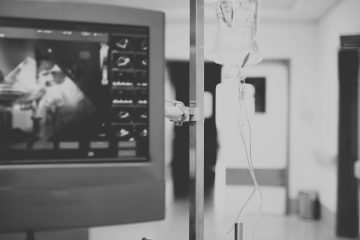What Happened On August 19th?
On August 19, 1960, the Soviet Union launched Sputnik 5 from the Baikonur Cosmodrome in Kazakhstan. This event became a key moment in the Space Race between the United States and the USSR. The mission carried two dogs, Belka and Strelka, along with 42 mice, two rats, and various plants into space. The Soviets aimed to send these living creatures into orbit and safely bring them back to Earth, proving that sending humans into space could be possible.
The day began with careful preparations at the launch site. Engineers and scientists, who had spent months planning and testing for this mission, understood its importance. Success was not certain, as previous attempts to send animals into space had often ended in failure or tragedy. At precisely 8:38 AM Moscow time, the spacecraft, mounted on a rocket, lifted off from the Cosmodrome and carried its precious cargo into space. The launch proceeded smoothly, and the spacecraft successfully entered orbit, beginning its journey around the Earth.
As Sputnik 5 orbited the Earth, the mission control team closely monitored the health of Belka, Strelka, and the other animals on board. The spacecraft transmitted important data back to Earth, allowing scientists to check how weightlessness and space radiation affected the animals. The dogs’ well-being remained a top priority, and the spacecraft had sensors that tracked their heart rate, blood pressure, and other vital signs. A camera on board also captured footage of Belka and Strelka during their time in space, giving scientists—and later the public—a chance to see how the dogs coped with the experience. The footage of the dogs in space was later used in Soviet propaganda to demonstrate the USSR’s success in the space race, boosting national pride and global prestige.
The mission continued throughout the day, with Sputnik 5 completing several orbits around the Earth. During the 24-hour mission, the spacecraft circled the planet 17 times. At one point, Belka became noticeably upset, barking and moving around. Soviet scientists, watching from the ground, worried that the stress of space travel might overwhelm the animals. However, both Belka and Strelka soon calmed down, and the mission proceeded without further problems. This incident provided scientists with valuable insights into how space travel might affect the minds of living beings, showing that mental health was as important as physical health in space missions. The mission also included plants aboard Sputnik 5, which scientists studied to observe their response to the lack of gravity and exposure to space conditions. Interestingly, these plants included wheat and peas, which were chosen because of their significance to human agriculture. The results of this experiment contributed to early research on growing food in space.
As the day ended, the team prepared for Sputnik 5’s return to Earth. On August 20th, the spacecraft re-entered the atmosphere, enduring the intense heat of re-entry. The capsule, carrying Belka, Strelka, and the other animals, parachuted safely to the ground in the Soviet Union. The successful return marked the first time that living creatures survived a trip into orbit and made it back to Earth unharmed. The recovery process involved a wide network of people spread across the USSR, who were ready to locate and retrieve the capsule if it landed far from the expected recovery area. A lesser-known aspect of this recovery effort is that it included military personnel, scientists, and even local farmers who were briefed to assist if the capsule landed in rural areas.
Sputnik 5’s success had a lasting impact. It gave the Soviet Union the confidence to advance human spaceflight, leading to Yuri Gagarin’s historic mission in April 1961, when he became the first person to orbit the Earth. The data gathered from this mission helped in developing the spacecraft that later carried Gagarin into space. Lessons learned from Sputnik 5 proved crucial in figuring out how to protect living beings during re-entry and ensure a safe landing. Another lesser-known fact is that the telemetry systems developed for Sputnik 5 were later refined and became standard in subsequent Soviet space missions, significantly improving communication between space and Earth.
After her historic flight, Strelka gave birth to a litter of puppies, one of which, named Pushinka, was given to U.S. President John F. Kennedy by Soviet Premier Nikita Khrushchev. Pushinka became a beloved pet in the Kennedy household, symbolizing a rare moment of warmth in the otherwise tense Cold War relations between the superpowers. This gesture showed how the space race, despite its competitive nature, sometimes led to moments of personal diplomacy between the two rival nations. What is less known is that Pushinka’s descendants, affectionately known as the “pupniks,” were gifted to various dignitaries and friends of the Kennedy family, spreading a small legacy of space diplomacy across the world.
Sputnik 5’s success also led to scientific advancements beyond the space race. The study of how plants responded to space conditions aboard Sputnik 5 influenced research in controlled environment farming, which later helped in growing crops in challenging conditions on Earth. The knowledge gained from the mission continued to shape space exploration and science for years to come. The data on plant growth in space later contributed to the development of biosphere projects, where scientists attempted to create self-sustaining ecosystems that could potentially support life in space colonies.





